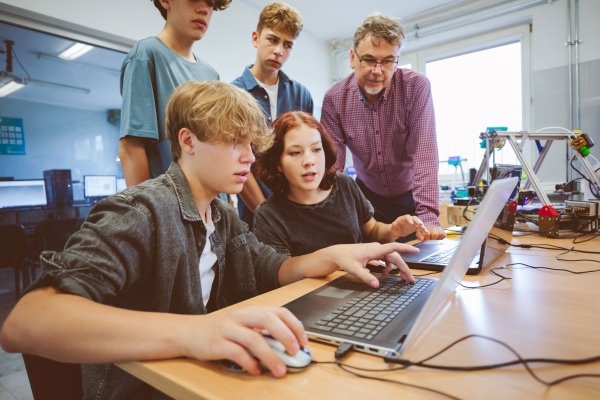A new survey by Gallup and the New Hampshire Learning Initiative finds that high school and middle school students are gaining career insight through career-related learning.
New Hampshire’s investments in career-related learning (CCL) for young people are paying off, with recent Gallup survey data showing that a majority of high school students want to participate in more of these opportunities to broaden their experiences.
According to the report, co-authored by Gallup and the New Hampshire Learning Initiative, one-third (38%) of high school student respondents said their CCL experience influenced their plans after high school, and nearly two-thirds (64%) of students said they would like more relevant opportunities.
The findings highlight the need for early career engagement among students and how visibility into higher education pathways can increase certainty in post-high school planning.
Methodology
More than 8,500 students in grades 5-12 from 25 schools and 13 districts across New Hampshire participated in the Gallup poll.
Need: There is a growing need across the United States to help young people identify career paths and make informed decisions after high school.
A May survey by Jobs for the Future found that 66% of young people (ages 16-24) aren’t sure what career they want to pursue, and 62% of respondents feel they have no or little control over their career path.
Young people with a bachelor’s degree were slightly more likely to know their career path (42%) than their peers without a degree (33%).
In higher education, more colleges and universities are offering early career development during students’ first year or integrating career planning into their curricula to ensure all students are guided and prepared before they graduate. Gallup research shows that integrating careers into the curriculum can have an impact on students’ post-secondary decisions even before they enroll in college.
What is CCL? Career-related learning in school can include participating in work-related field trips, watching job panels, taking career and technical education classes, participating in mentorship, volunteering, and completing a job shadow, internship, or apprenticeship.
The survey found that 90 percent of middle and high school students participate in at least one work-related learning activity through school, and 73 percent of high school students agree that their school offers many CCL opportunities.
Students most often engaged in work through class activities (58%), career fairs (40%), and field trips (37%).
Among high school students, those in 11th or 12th grade were more likely to report experiencing a CCL in the past year.
Next steps: Addressing careers in the classroom also exposed students to new paths: 47% of high school students said they learned about jobs or careers they had never heard of before during the last year at school. But not all students found themselves or their passions in their CCL learning: Only 48% of students said their school’s CCL included the types of jobs or careers that interest them.
Survey data shows that experiential learning opportunities are most helpful in developing post-graduation plans, especially for students who have participated in internships or externships (57%), registered apprenticeships (54%), or work- or career-related volunteer work (51%).
However, participation in these activities is among the lowest, with only 17% of high school seniors participating in internships or externships and 9% working as apprentices.
Students who have undergone CCL are more likely to be positive and hopeful about their futures and say their experiences at the school have helped them feel like different types of work are right for them.
So what? Previous reports by American Student Assistance and Jobs for the Future found that high school students need additional communication from colleges to support their career paths after high school.
Despite an increasing number of students expressing interest in vocational training and alternative pathways, a lack of information about opportunities is a barrier to participation.
Gallup research also points out that community-based experiences such as internships, volunteering, job shadowing and extended learning opportunities are highly correlated with confidence in post-high school plans. Colleges can help create opportunities for young people to participate in career-related settings outside of school.
As one example, this year Florida State University’s Facilities Department established a program called “Pathways to Success” to provide work-based learning to local high school students. As interns, the students work with the facilities management shop team, learning to troubleshoot HVAC-related systems on campus.
Do you have any career readiness tips you can share that could help students be more successful?

